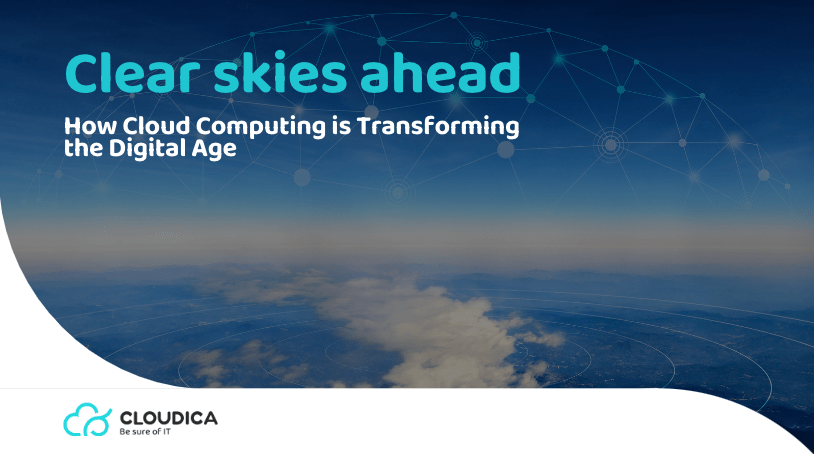Once considered a futuristic concept, cloud computing is now an integral part of our digital lives. Over the past decade, cloud technology has revolutionized the way we store, access, and share data, making it easier than ever for businesses and individuals to maintain and utilize information quickly and efficiently. In this article, we’ll explore the rise of cloud computing and its impact on the digital age.
By Przemysław Dudek, Chief Financial Officer
As the CFO of an IT cloud-services company, I have had the opportunity to observe and participate in the growth and development of the cloud industry over the past decade. In my opinion, the current state of the industry is one of both innovation and disruption.
The Rise of Cloud Computing
Over the past decade, we have witnessed the rapid rise of cloud computing as a viable and often preferred means of storing and accessing data and applications. Gone are the days of expensive on-premises hardware and software installations. Instead, companies of all sizes are turning to the cloud to take advantage of the scalability, flexibility, and cost-effectiveness that it offers.
One of the main drivers of this shift has been the proliferation of mobile devices and the need for companies to provide their employees with access to data and applications from anywhere, at any time. The cloud has enabled this by providing a centralized location for storing and accessing data and applications, which can be accessed through the internet from any device.
In addition to the convenience and accessibility that the cloud offers, it also allows companies to save on the costs of hardware, software, and maintenance. Instead of purchasing and maintaining expensive on-premises systems, companies can subscribe to cloud services on a pay-as-you-go basis, only paying for the resources that they actually use.
The Challenges and Opportunities of the Cloud Industry
While the cloud has brought about many benefits and efficiencies, it has also brought about new challenges and opportunities for both cloud service providers and their customers.
One challenge that has emerged is the need for increased security in the face of cyber threats. As more and more sensitive data is stored in the cloud, the risk of data breaches and other cyber attacks increases. This has led to a focus on developing and implementing robust security measures to protect against these threats.
Another challenge is the rapidly evolving nature of the industry. As new technologies and platforms emerge, cloud service providers must continuously innovate and adapt to stay ahead of the curve and meet the changing needs of their customers. This can be a significant undertaking, but it also presents opportunities for companies that are able to successfully navigate these changes.
A third challenge is the increasing competition in the industry. As the cloud has become more mainstream, the number of players in the market has increased, leading to a more crowded and competitive landscape. This can make it difficult for smaller players to differentiate themselves and stand out in the market.
Despite these challenges, I believe that the cloud industry presents a wealth of opportunities for companies that can effectively address these challenges and capitalize on the benefits that it offers. By offering innovative and reliable cloud services, companies can differentiate themselves and gain a competitive edge in the market.
The Future of Cloud Computing
Looking ahead, I believe that the future of cloud computing is bright. As more and more companies turn to the cloud, the demand for cloud services is likely to continue to grow. This presents opportunities for companies that can meet this demand with high-quality and innovative services.
One area that I see as particularly promising is the intersection of cloud computing and emerging technologies such as artificial intelligence (AI) and the Internet of Things (IoT). By leveraging the power of the cloud, companies will be able to harness the data generated by these technologies to drive innovation and gain a competitive advantage.
Another trend that I anticipate will continue is the movement towards hybrid cloud environments, where companies use a combination of on-premises systems and cloud services. This allows companies to take advantage of the best of both worlds, leveraging the scalability and flexibility of the cloud while still retaining control over certain applications and data.
Conclusion
Cloud computing is transforming the digital age and is here to stay. With its many benefits and opportunities, cloud computing is sure to remain a major part of our lives in the years to come.
Companies that can successfully address the challenges and capitalize on the benefits of the cloud will be well-positioned to thrive in the digital age.









